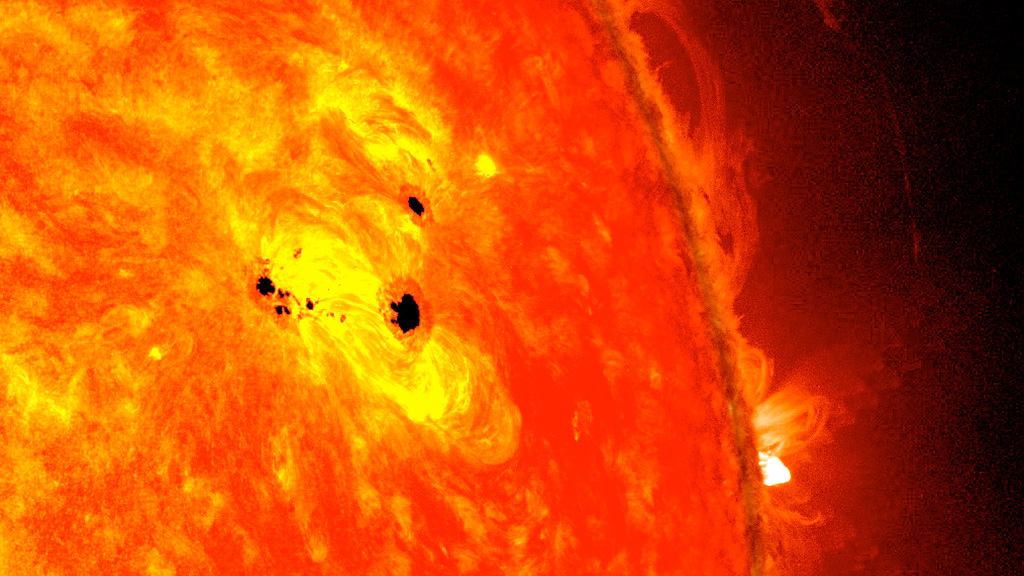NASA May Have Detected Highest Sunspot Count in Over Two Decades

NASA’s Solar Dynamics Observatory Captures Unprecedented Sunspot Activity, Indicating Solar Cycle 25 Surge
On August 8, 2024, NASA’s Solar Dynamics Observatory (SDO) potentially recorded an exceptional number of sunspots, possibly marking the highest count in over 20 years. These sunspots, though they may seem small when observed from Earth, are immense in reality, with some comparable in size to our planet. They are areas of intense magnetic activity on the Sun’s surface that can provoke solar flares and coronal mass ejections (CMEs). Such solar events have the capacity to release bursts of energy towards Earth, potentially leading to geomagnetic storms that could disrupt communications, satellites, and power systems.
Understanding Sunspots and Their Significance
Sunspots are darker, cooler regions on the Sun’s surface resulting from magnetic field disturbances. These areas are crucial as they are often the birthplace of solar flares, which are sudden outbursts of radiation. When these flares are particularly intense, they can trigger CMEs—massive bursts of solar plasma and magnetic fields ejected into space. If these CMEs are directed towards Earth, they can cause geomagnetic storms that may affect various technological systems, including GPS signals, communication networks, and electrical grids.

Solar Cycle 25: A Period of Heightened Activity
The Sun’s activity follows an approximately 11-year cycle known as the solar cycle, which oscillates between periods of solar minimum (low activity) and solar maximum (high activity). Currently, we are in Solar Cycle 25, which began in December 2019. This cycle has already demonstrated higher levels of activity than initially projected. On August 8, 2024, the sunspot number (SSN) was estimated at 337. This count, if confirmed, could represent the highest daily number of sunspots recorded since March 2001, indicating that Solar Cycle 25 is likely to continue exhibiting significant solar activity.
Implications of High Sunspot Counts
The ramifications of a high SSN are not only of scientific interest but also have practical consequences. Elevated sunspot activity can result in more frequent and intense geomagnetic storms. These storms can disrupt satellite communications, GPS systems, and even terrestrial power grids. As Solar Cycle 25 progresses, the probability of such disruptions increases, highlighting the need for ongoing monitoring of solar activity. While the final SSN for August 8 is pending confirmation, the preliminary data suggests that we may be entering a period of increased solar activity with potentially far-reaching effects on our technology-dependent society.
Preparing for Solar Phenomena
Given the potential impacts of increased solar activity, it is essential for scientists and technology operators to stay vigilant. Understanding and predicting solar phenomena can help in mitigating their effects on critical infrastructure. As solar cycles continue to evolve, the ability to anticipate and manage the consequences of solar events becomes increasingly important to safeguard our technological systems and maintain uninterrupted communication and power services.




















